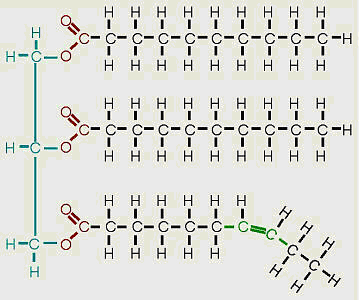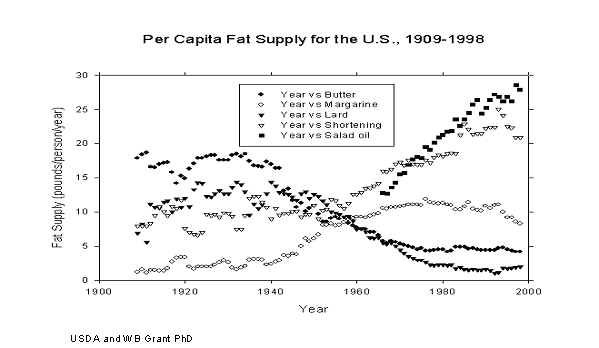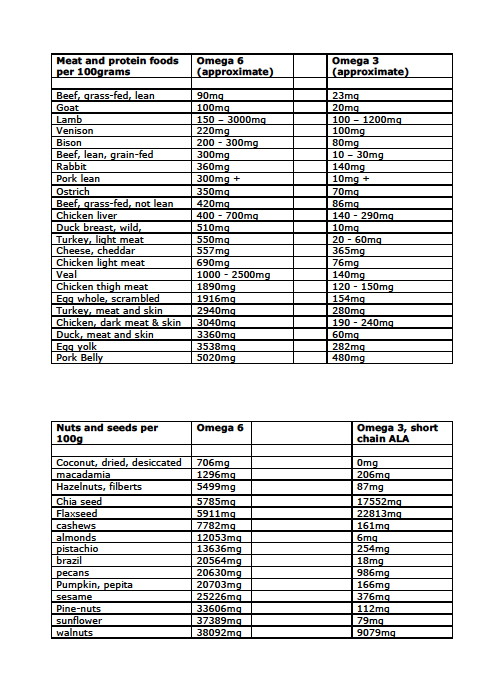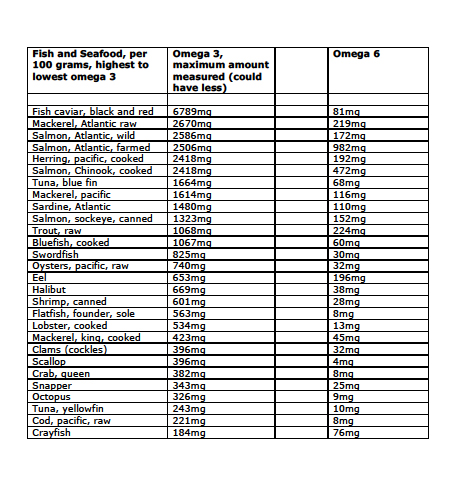Great Post on Julianne's Paleo and Zone Nutrition Blog
Omega 6 and 3 in nuts, oils, meat and fish. Tools to get it right.
You are strict paleo, you eat nothing but meat, seafood, fruit and veggies, nuts and seeds. Your snacks are mainly a handful of almonds. Did you know just 60 grams of almonds gives you all the omega 6 you need – and more may be detrimental?
One of the ways our diets have changed dramatically from the diets of our ancestors and even the very recent past is the ratio of Omega 6 to Omega 3 polyunsaturated fatty acids in the food we eat. A huge amount has been written about this subject, dozens of studies have been published. I’m not going into detail, the object here is to provide tools to help you get this balance right. At the end of the page – I’ve posted some links to other interesting blog posts and articles.
(For a really well explained primer on the fats see this article from AnastasiaFat Glorious Fat: Part 1)
What are Omega 6 and omega 3 polyunsaturated fatty acids?
A fatty acid molecule has a chain of carbon atoms linked together with hydrogen atoms attached on one side. In a saturated fatty acid each carbon has a single bond with the neighbouring carbon atom and a single bonds to two hydrogen atoms (Carbon atoms always make 4 bonds). In an unsaturated fatty acid chain one or more carbon atoms is linked to its neighbour with a double bond and only one side hydrogen atom attached. Mono-unsaturated fats have one carbon to carbon double bond, and poly-unsaturated fats, two or more. Here is a triglyceride (the usual form that fats are found – 3 fatty acid chains linked to a glycerol molecule or backbone at one end) that has two saturated and one mono-unsaturated fatty acid chain.
This is Linoleic acid – also known as Omega 6. The reason it is called omega 6 is because the first double bond is at the 6th carbon atom from the Omega end as shown:
Here is a 3D ball representation:
An omega 3 fatty acid therefore has the first double bond at the 3rd carbon. Here is alpha linolenic acid, showing it is 18 carbons long with 3 double bonds:
Even though these are shown as straight lines in the diagram – in reality the double bonds make the fatty acid bend and swivel. This is what makes the unsaturated fat liquid as opposed to solid at room temperature.
Omega 6 and Omega 3 fatty acids are 2 different classes of polyunsaturated fats. They are both important, because they are made into powerful regulatory hormones. Omega 6 fats are primarily converted into a range of pro- inflammatory hormones and omega 3 into anti-inflammatory hormones. Perhaps it would help to think of the analogy of hot and cold taps. Hot being omega 6 and cold being omega 3. We need a balance of hot and cold to get the right temperature. Due to the abundance of omega 6 in our diets from chemically extracted vegetable oils, (see graph below and the recent increase in salad oil, shortening and margarine) and a lack of food sources of omega 3 like cold water fish and grass fed / wild meat we have an imbalance. An ideal ratio is 4:1 up to 1:1 of omega 6 to omega 3. This is a long way from the standard American diet which gives 20:1. Imagine the hot tap (inflammation) on full and the cold tap (anti-inflammation) on a dribble. Inflammation is rampant.
There are potentially 2 different ways to rectify this. One is to add a high dose of omega 3 to balance the amount of omega 6 we eat. The other is to minimise omega 6 and increase the omega 3 just enough to give an ideal balance. Which is the best solution?
Polyunsaturated fats (PUFAs) are far more unstable than mono-unsaturated and saturated fats because of all the carbon to carbon double bonds. These double bonds are easily oxidised, so PUFAs are more susceptible to oxidation – called lipid peroxidationhttp://en.wikipedia.org/wiki/Lipid_peroxidation. This oxidised fat can cause cellular and DNA damage. The more PUFA in a cell membrane the higher the risk of oxidation, and consequent damage. More in this case is not better. Adding large amounts of Omega 3 to balance omega 6 is not the best solution.
So the best way to improve the balance on omega 6 to omega 3 is to reduce omega 6 as much as possible. Of course some omega 6 is essential as it is needed as a building block for eicosanoid hormones. In a normal diet it is virtually impossible to go low enough to cause omega 6 deficiency. When we bring the total amount of omega 6 in our diets down, we can then easily add fish (like salmon and sardines) or fish oil to get the ideal ratio between omega 3 and 6. How low should we go with omega 6? 1 -4% calories is recommended by most Paleo researchers. In a 2000cal diet this 2.2 – 8.8 grams omega 6 per day.
How to decrease your Omega 6.
Most paleo eaters are aware of the need to decrease omega 6, however my observation is that following the eating guidelines does not automatically mean people reduce omega 6 enough. Look at the CrossFit nutrition outline “…base your diet on garden vegetables, especially greens, lean meats, nuts and seeds, little starch, and no sugar.” What do many eat for snacks? Nuts. Particularly almonds. And many use almond meal as the basis for grain food alternatives like pizza bases. Just 100 grams of almonds – 3 small handfuls gives you a whopping 12 grams of omega 6.
So here’s what I’ve done to help you out. I pulled together some nutrition data fromhttp://nutritiondata.self.com an made up some tables showing you the omega 6 content of oils, nuts and seeds, and meat. Aim to get no more that 6 – 10 grams of omega 6 per day. Omega 6 oils should be replaced by those containing predominantly mono-unsaturated fat like olive, avocado and macadamia nut oil, and saturated fats like coconut oil.
Following that is a table of fish and seafood showing the omega 3 content per 100 grams of fish, make sure you add in enough omega 3 to give you around a 2:1 ratio of Omega 6 to Omega 3. Instead of eating fish you can take fish oil. However I recommend you choose your oil carefully. Oxidation is a problem, I choose fish oil I know has been tested for oxidation, and smells and tastes fresh and clean.
Note: There is a lot of variation in the measurement of omega 6 and 3 content in foods, depending on the food the animal is fed, the food sample measured, variation in fat content between animals etc. I have tried to pick a representative measurement. Think of this as a guideline, it may not be 100% accurate for the food you are about to eat.
Here are the complete charts on a PDF
* New addition: New Zealand green lipped mussels per 100grams 1.5 g of DHA, 1.26 g of EPA, = 2460mg Omega 3, less than 500mg omega-6 fats. (Mark Sisson from this study)
An extensive list of seafood and Omega 3: Content Omega 3 fatty acid content of fish and seafood.
Tools to help you get your omega 6 to 3 ratio and amount right.
Nutrition Data, foods by nutrient search http://nutritiondata.self.com/tools/nutrient-search
Wolfgram Alpha, Paleo Robb shows you how to use this tool here
KIM-2 ( Keep It Managed, ver.2) contains eicosanoid-related data with the omega-6 and omega-3 fatty acid contents of over 9,000 food servings . KIM sorts and identifies foods with relatively high amounts of omega-3 fatty acids that help produce desired tissue fatty acid compositions as estimated from published metabolic data.http://efaeducation.nih.gov/sig/kim.html
Analyse your diet and it’s omega 3 and 6 content using Cron-O-Meter (I used this to analyse the fatty acids and amino acids in Durianrider’s mostly fruit diet.)
Nutrition in foods – here you can look up individual foods and get a nutrient breakdown including fatty acid types http://www.nutritioninfoods.com/
Getting your omega 3: 6 levels measured
To know where you are starting from and to monitor your progress you can get your omega 3:6 in blood cells measured
GeneSmart omega 3 test:http://www.genesmart.com/pages/omega_3_index_home_blood_testing_kit/105.php
Life Extension Foundation Omega Score test http://www.lef.org/Vitamins-Supplements/ItemLCOMEGA/Omega-Score-Blood-Test.html
Call Nutrasource Diagnostics 519-824-4120 x 58817 for a test kit
UK: Ideal Omega Test http://www.idealomegatest.com/
More reading on Omega 6 and Omega 3
5th October 11 – New from Robb Wolf - “Fish Oil”
This website Omega-6 Fat News & Commentary by Evelyn Tribole, MS, RD, is devoted to this subject only and has a continuous feed of new studies. Download her table of Omega 6 content in 150 foods, link to this and other reading here
Chris Masterjohn for Weston A Price Foundation “Precious yet Perilous” Excellent article on Omega 3 and Omega 6
Krispin Sullivan, CN. Great article on Omega 3 and 6 (Graph of fat intake changes above comes from this article)
Marks Daily Apple: The Definitive guide to oils and Farmed seafood, what is safe and nutritious?
Chris Kresser When it comes to fish oil more is not better and more articles on omega 3 and 6 http://thehealthyskeptic.org/page/5?s=omega+6+3
Eat Wild: Grain fed vs grass fed animals, Where to find grass fed meat in USA
Peter Ballerstedt Is Grass Fed Beef Really “Rich in Omega 3s?
From Footsteps Farm today Lard Facts (Awesome article on the quality of pastured lard and fats in general)
Dr Barry Sears PhD, Understanding eicosanoid hormones and inflammation





















2 comments:
I found your this post while searching for some related information on blog search...Its a good post..keep posting and update the information. Energy Dais presents the most comprehensive list of the Top Oilfield Drill Bit Companies in India, Middle East, USA & Canada. Choose from a list of 90+ handpicked Drill Bit suppliers and manufacturing companies. oilfield drill bit companies
Leading Logistics Company in India TCIEXPRESS offers a wide range of services both within India and beyond. They have an extensive network that allows them to maximize delivery all around the world.
Post a Comment